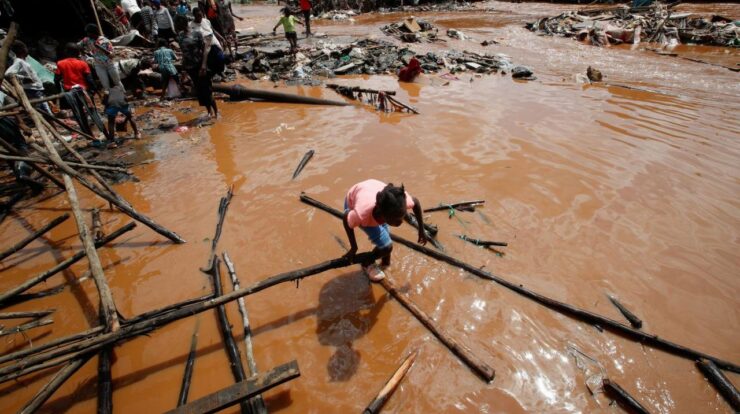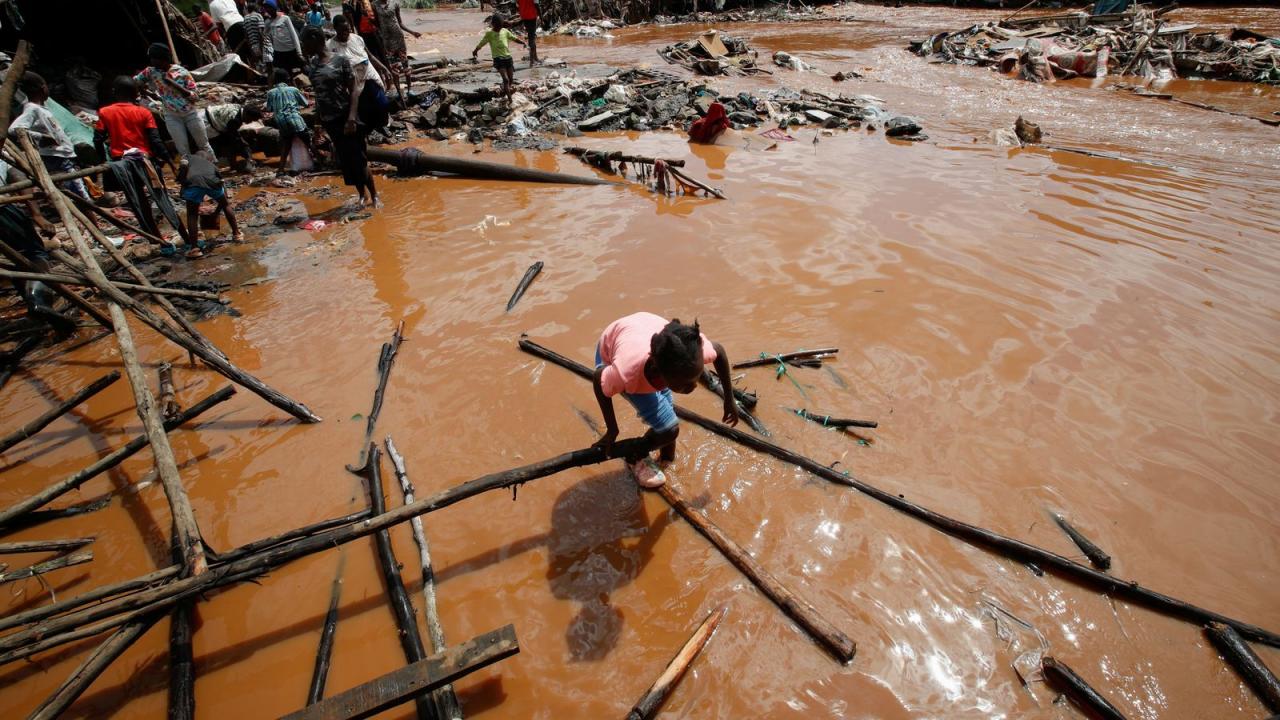
Nairobi, Kenya, has been ravaged by severe flooding, leaving a trail of destruction and displacement. The relentless downpours have wreaked havoc on infrastructure, forcing evacuations, and raising concerns about health and environmental consequences. This comprehensive analysis delves into the devastating impact of the Kenya Nairobi flooding.
The torrential rains have caused widespread damage to roads, bridges, and buildings, disrupting transportation and causing significant economic losses. Thousands of residents have been displaced from their homes, seeking shelter in evacuation centers. The flooding has also raised concerns about waterborne diseases and respiratory infections, prompting health authorities to take preventive measures.
Impact on Infrastructure: Kenya Nairobi Flooding

The relentless downpours have wreaked havoc on Kenya’s infrastructure, causing widespread damage to roads, bridges, and buildings.
Major roads have been rendered impassable, disrupting transportation and isolating communities. Bridges have collapsed, severing vital connections between regions.
Buildings, both residential and commercial, have suffered significant damage. Many have been flooded, destroying property and displacing residents.
The economic consequences of infrastructure damage are substantial. Disruption of transportation has hindered the flow of goods and services, leading to shortages and price increases.
The loss of property and damage to businesses have dealt a severe blow to the local economy.
Displacement and Evacuations, Kenya nairobi flooding
The flooding has forced tens of thousands of people from their homes, seeking shelter in evacuation centers or with family and friends.
Authorities have faced challenges in evacuating residents from affected areas due to the inaccessibility of roads and the sheer number of people in need of assistance.
Evacuation centers are struggling to provide adequate shelter, food, and medical care for the displaced residents.
Health and Sanitation Concerns
The flooding poses significant health risks to the affected population.
Stagnant water is a breeding ground for mosquitoes, increasing the risk of waterborne diseases such as malaria and dengue fever.
Respiratory infections are also a major concern, as the damp conditions and lack of proper sanitation can lead to the spread of pneumonia and other illnesses.
Health authorities are working to prevent and control the spread of disease by providing clean water, sanitation facilities, and medical care to the affected communities.
Environmental Impact
The flooding has had a devastating impact on the local ecosystem.
Wildlife habitats have been destroyed, and many animals have been killed or displaced.
The floodwaters have also contaminated water sources, leading to fish kills and pollution of drinking water.
The long-term consequences of environmental damage caused by flooding include loss of biodiversity, degradation of water quality, and increased vulnerability to future flooding events.
Ending Remarks
The government and international aid organizations are working tirelessly to provide assistance to those affected by the flooding. The recovery process will be long and challenging, but the resilience of the Kenyan people will undoubtedly prevail. As the floodwaters recede, the focus will shift to rebuilding and strengthening infrastructure, ensuring the well-being of the affected communities, and mitigating the environmental impact.
Expert Answers
What caused the flooding in Kenya Nairobi?
The flooding was caused by torrential rainfall that overwhelmed the city’s drainage systems.
How many people have been affected by the flooding?
Thousands of people have been displaced from their homes due to the flooding.
What is the government doing to help those affected by the flooding?
The government is providing emergency assistance to those affected by the flooding, including food, shelter, and medical care. The government is also working to repair damaged infrastructure and prevent further flooding.




